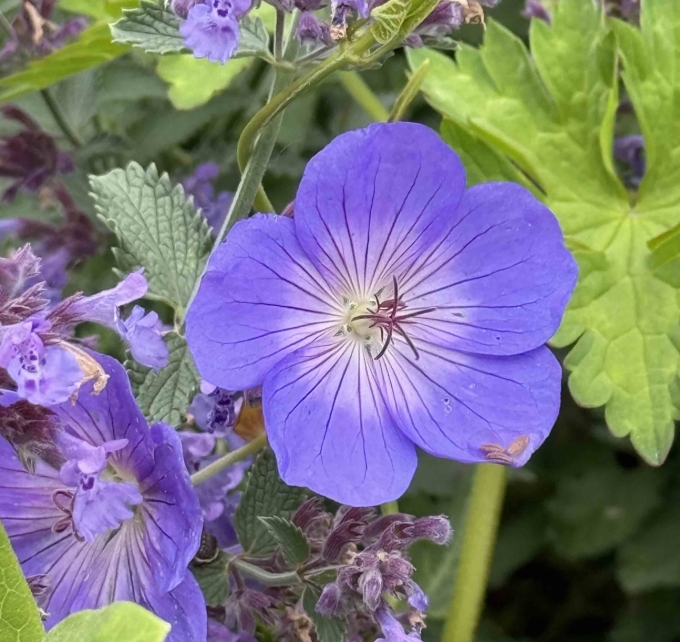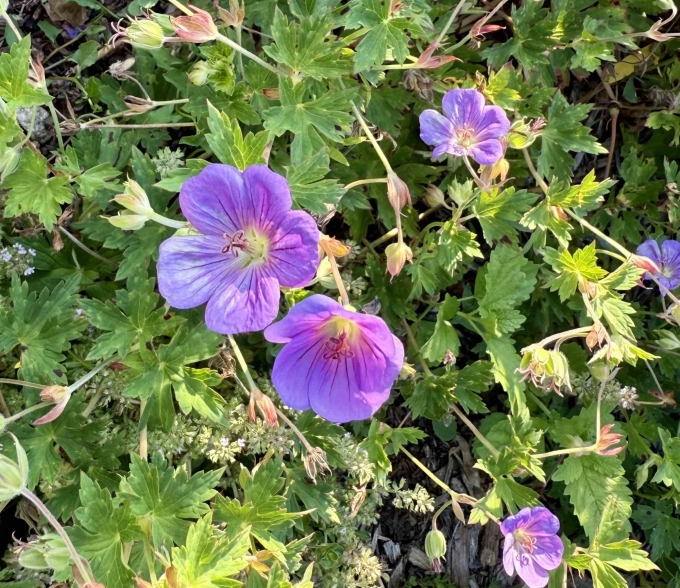Common Name: Rozanne Hardy Geranium, Cranesbill
Family: Geraniaceae
Plant Type: Herbaceous Perennial
Native Range: Cultivar or Hybrid (Geranium himalayense × Geranium wallichianum)
Hardiness Zones: 5–8 (can survive in protected areas of zone 4, so may perform well in much of Nebraska with good siting)
Height: 1.0 to 2.0 feet
Spread: 2.0 to 3.0 feet
Bloom Time: Early summer to frost (June–October in Nebraska)
Bloom Description: Large, violet-blue, saucer-shaped flowers with pale centers and delicate veining
Sun Exposure: Full sun to part shade
Water Needs: Medium
Soil Preference: Moist, well-drained soils; tolerates average garden soils
Management Level: Low to medium
Suggested Use: Borders, groundcover, cottage gardens, pollinator gardens
Attracts: Bees, butterflies
Tolerates: Deer, heat (with adequate moisture), partial shade
Notable Features: Exceptionally long bloom season, sprawling mounded habit, excellent groundcover
Nebraska Growing Notes:
‘Rozanne’ is a long-blooming, reliable perennial that performs well in Nebraska gardens when given the right conditions. Best planted in full sun to light afternoon shade, especially in the hotter and drier parts of Nebraska. In eastern Nebraska, it thrives with regular moisture and good drainage.
Its sprawling habit makes it ideal for softening edges of beds or weaving through other perennials. The foliage may decline in extreme heat and drought—mulching and occasional watering help maintain vigor through July and August. It typically rebounds as temperatures cool in fall.
Deadheading is not required, but cutting back midseason can refresh growth if plants become straggly.
Landscape Use:
Excellent in mixed borders, foundation plantings, cottage gardens, pollinator beds, or as a low-maintenance groundcover under taller perennials. Its free-flowering nature and mounded form make it useful for filling gaps in perennial beds.
Caution:
Non-toxic and wildlife-friendly. Can sprawl into surrounding plants, so give it space to spread or occasionally trim edges to keep it contained. Not invasive.
Garden Locations:
Bed(s) 1, 2, 11 (Planted in our gardens summer 2024)


